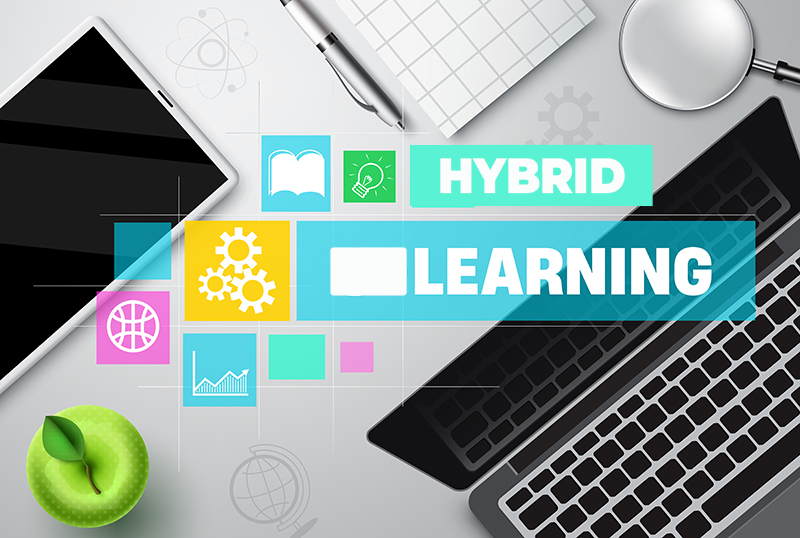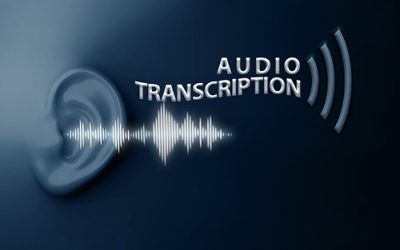In recent years, advancements in technology have led to a transformative shift in the field of education. Hybrid learning, also known as blended learning, has emerged as a powerful educational approach that combines traditional classroom teaching with innovative technology-driven methods. The concept of hybrid learning, also known as blended learning, gained prominence as schools sought to adapt to the post-COVID-19 landscape, where a mix of remote and in-person learning became essential.
Digital transcription services play a significant and indispensable role in this dynamic approach. By capturing and transcribing lectures, these services make educational content accessible to all students, regardless of their learning environment.
Hybrid learning takes the best elements of traditional education, like face-to-face interactions and hands-on activities, and seamlessly integrates them with the power of technology. In January 2023, BBC reported that though the world has pretty much returned to normal, many universities are still using hybrid teaching. However, hybrid learning also comes with certain challenges (www.freshered.com). This blog discusses the concept of hybrid learning, its benefits, challenges, and its potential to transform modern education.
What is Hybrid Learning?
Hybrid learning is an instructional model that seamlessly blends face-to-face classroom sessions with online learning experiences. It aims to integrate the strengths of both traditional teaching methods and digital tools to enhance the educational process. A hybrid learning environment is a mix of in-person lectures, group discussions, and hands-on activities, alongside accessing digital resources, interactive modules, and collaborative online platforms.
Hybrid learning incorporates digital tools and platforms, such as:
- Learning management systems (LMS)
- Scientific software
- Video conferencing platforms
- Mobile devices (tablet or smartphone)
- Digital textbooks
- Interactive digital white boards
- Webcams
Activities for synchronous teaching sessions include:
- Online exercises
- Online discussion forums
- Pre-recorded video lectures (question-and-answer sessions)
- Forum sessions and debates
- Group feedback sessions
- Brainstorming
Different programs or subjects may have distinct learning objectives, content complexity, student demographics, and teaching styles. To design a hybrid learning model, educators need to understand the specific learning goals and outcomes they aim to achieve in each program or class. They must choose technologies that best suit the subject matter and the students’ needs, making sure they enhance the learning experience rather than becoming a distraction.
By customizing hybrid learning to each program and class, educators can maximize the potential of this educational model, cater to diverse learning needs, and create a more meaningful and effective learning experience for their students.
Four Top Benefits of Hybrid Learning
Hybrid learning offers many benefits for both students and educators.
- Flexibility: In the hybrid learning setup students to access course materials and lectures at any time and from any place with an internet connection. This flexibility is particularly beneficial for adult learners, working professionals, or students with other commitments.
- Personalized learning: Hybrid learning allows educators to tailor content to meet individual students’ needs and learning styles. This allows students to learn at their own pace using digital tools, ensuring a deeper understanding of the subject matter. With transcripts of the sessions, they can revisit material for better understanding.
- Increased engagement and collaboration: Hybrid learning platforms facilitate seamless communication between teachers and students. Video conferencing tools like Zoom, Microsoft Teams, and Google Meet enable educators and students to connect in real-time, facilitating virtual classrooms and collaborative discussions. These tools also provide features such as screen sharing, breakout rooms, and chat functionalities, enhancing the overall learning experience.
- Access to a vast repository of resources: Hybrid learning provides students with a wealth of online resources, including e-books, videos, interactive quizzes, and research materials. This allows students to explore various perspectives and get a proper understanding of the subject matter.
This makes learning more collaborative, engaging and enjoyable. Online discussions, group projects, and virtual classrooms encourage students to actively participate in their learning process. By fostering a collaborative environment, hybrid learning enhances essential skills such as critical thinking, problem-solving, and communication.
With all these advantages, hybrid learning provides students with an enriched learning experience, which explains why interest in hybrid approaches that blend in-class and online activities is increasing. A survey conducted by the Babson Survey Research Group reported that 69.1% of academic leaders believe that online learning is critical to their long-term strategy. Furthermore, a study conducted by the U.S. Department of Education found that students who engaged in hybrid learning performed better academically than those in traditional classroom settings.
Challenges and Solutions in Blended Learning
While hybrid learning offers numerous benefits, it also presents challenges that need to be addressed. One of the main challenges is that not all students have equal access to technology and reliable internet connectivity, which can hinder their participation in hybrid learning. To address this digital divide, educational institutions should strive to provide equal access to technology and resources for all students.
Capacity building is another challenge.In order to deliver enriching and captivating learning encounters for students, educators and academic leaders must prioritize establishing the necessary framework to uphold hybrid and blended learning techniques. Placing significant emphasis on constructing a suitable infrastructure is crucial. Equally vital is the enhancement of faculty capacity, ensuring they gain proficiency in online learning methodologies, e-Learning tools, and the adept utilization of cutting-edge technology to facilitate the process of teaching and learning.
Maintaining student engagement and motivation in the online environment is another problem. To address this, teachers should utilize various strategies to keep students engaged, such as interactive activities, gamification, and multimedia content. Additionally, facilitating peer collaboration and feedback can help promote collaboration and motivation.
A Science Direct study highlights that the success of blended learning hinges on three main factors: student characteristics (such as technology familiarity and learning responsibility), teacher attributes (including teaching style and technology competence), and technology aspects (like ease of use and technical support). By following best practices and overcoming challenges, educational institutions can combine traditional face-to-face classroom interactions with online learning experiences effectively. One best practice is lecture transcription.
Transcriptionists convert spoken language in lectures and discussions into written text. This enables students to access and review the content at their convenience, reinforcing comprehension and aiding in note-taking. Transcripts also ensure accessibility to recorded lectures, online discussions, and other audio-based materials, making them easily searchable and comprehensible. Students can revisit recorded lectures, study group discussions, and access digital materials whenever needed, enhancing their learning journey. Transcripts also enable educators to review their material and identify areas of improvement. Overall, digital transcription services play a key role in blending the best of tradition and technology in the educational experience.
Hybrid learning is here to stay. Seamless integration of the best elements of traditional education, like face-to-face interactions and hands-on activities with the power of technology not only enhances the learning experience but also empowers educators to create more personalized and inclusive educational environments.
Elevate the blended learning experience with digital transcription!




